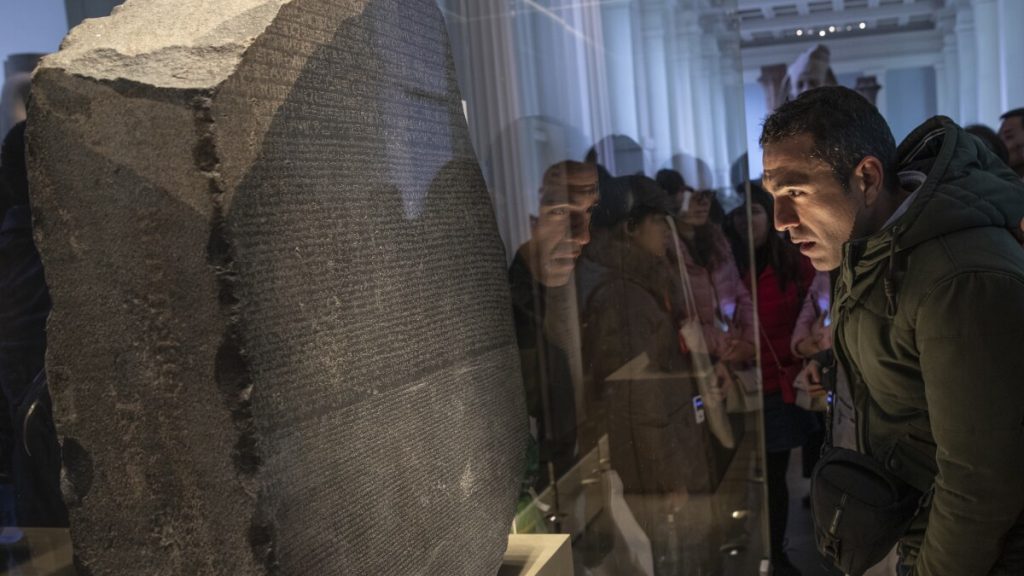In the hallowed halls of renowned museums across the globe, treasures from Egypt’s ancient past stand as silent witnesses to a history of acquisition and colonialism.
From the enigmatic Rosetta Stone in London’s British Museum to the celestial wonder of the Dendera Zodiac now gracing the Louvre in Paris, these artifacts give us tales of cultural exchange, conquest, and controversy.
The Rosetta Stone – British Museum, London, UK
The Rosetta Stone, a slab of carved granodiorite dating back to 196 BCE, is one of the most famous artifacts in the British Museum’s collection. It played a pivotal role in deciphering the Ancient Egyptian language, with inscriptions in three scripts: hieroglyphs, Demotic, and Ancient Greek.
Acquired by the British in the early 19th century, it remains a prized possession despite Egypt’s long-standing efforts to return it.
The Dendera Zodiac – Louvre Museum, Paris, France
The Dendera Zodiac, a sandstone bas-relief depicting constellations, was originally part of the Temple of Hathor in Egypt. Removed by French military members during Napoléon’s invasion, it is now displayed in the Louvre Museum.
This ancient map of the sky holds significant religious and historical importance, contributing to the development of astronomy systems.
The Bust of Nefertiti – Neues Museum, Berlin, Germany
Crafted by Thutmose in the 14th century BCE, the Bust of Nefertiti is a symbol of Egyptian artistry. Excavated illegally by the German Oriental Company in the early 20th century, it has been the subject of return discussions since the 1920s.
Despite Egypt’s appeals, it remains in the Neues Museum, Berlin, as a renowned artifact of ancient beauty.
The Statue of Hemiunu – Roemer und Pelizaeus Museum, Hildesheim, Germany
The Statue of Hemiunu, a life-size limestone sculpture, was discovered in 1912 by the German Oriental Company. Believed to represent Hemiunu, the architect of the Great Pyramid of Giza, it was removed from his tomb and is now housed in the Roemer and Pelizaeus Museum. Its legality of acquisition adds complexity to repatriation efforts.
The Bust of Prince Ankhhaf – Museum of Fine Arts, Boston, US
Another limestone sculptural portrait looted from an Egyptian tomb is the Bust of Prince Ankhhaf. Found within his tomb, it was eventually acquired by the Museum of Fine Arts in Boston. Despite Egypt’s desire for its return, its current location remains outside its homeland.
Efforts for Repatriation
In recent years, initiatives led by figures like Zahi Hawass, the prominent Egyptian archaeologist, have sought to repatriate these and other looted Egyptian treasures.
While museums may entertain discussions, the return of iconic artifacts remains unlikely due to legal and moral complexities. However, there’s hope for voluntary returns through a “soft approach,” signaling a step in the right direction toward acknowledging colonial pasts and offering reparations.



